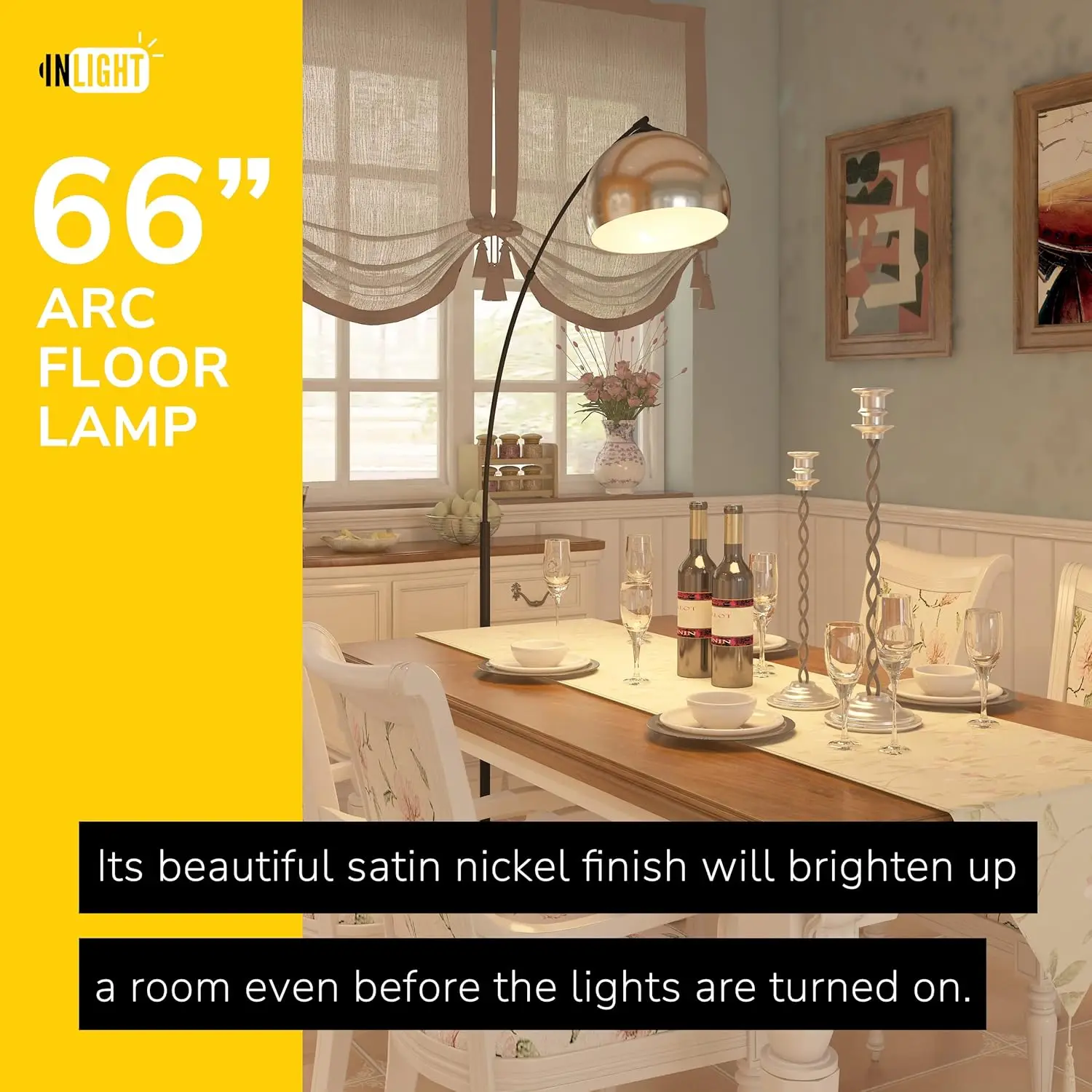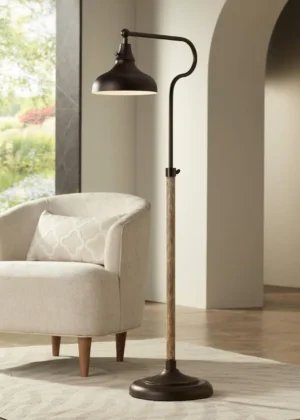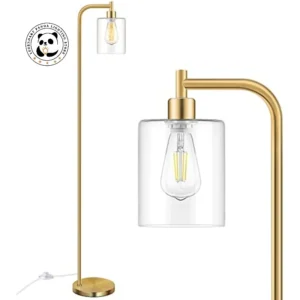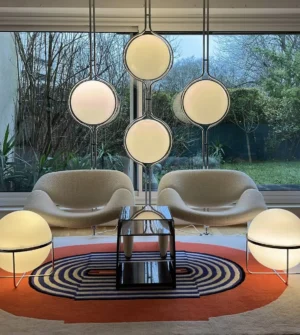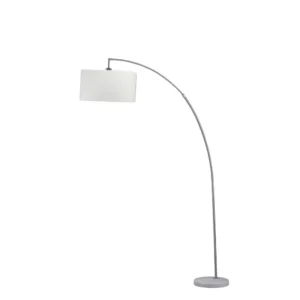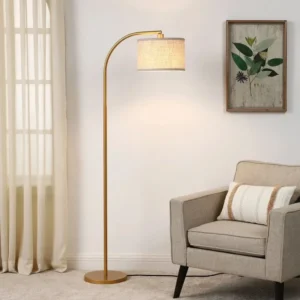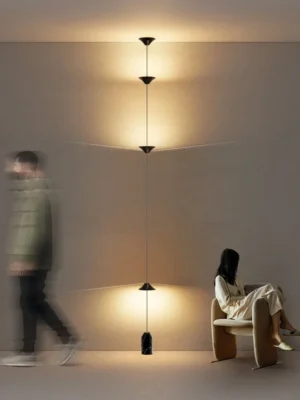Introduction: Understanding Metal Finishes in Modern Lighting
The world of interior design is illuminated not just by light itself, but by how that light interacts with the materials around it. Metal finishes on lighting fixtures play a crucial but often overlooked role in both the functional and aesthetic aspects of lighting design. When you select a lamp or fixture, you’re choosing not only a source of light but also how that light will behave in your space.
Different metal finishes interact with light in distinct ways:
– Some surfaces reflect light brilliantly, creating dramatic highlights
– Others absorb light, offering subtle contrast and definition
– Textured finishes scatter light, creating a softer, diffused effect
– Color tones in metals can warm or cool the perceived light output
This relationship between metal finish and light is both an art and a science. The choice of finish affects everything from the quality and distribution of light to the fixture’s visual presence in a room. Understanding these interactions helps both professional designers and homeowners make informed decisions when choosing the perfect arc floor lamp or other lighting fixtures for their spaces.
Whether you’re renovating a space or simply updating a fixture, recognizing how metal finishes transform lighting effects gives you powerful tools to shape the ambiance and functionality of any environment.
Optical Properties of Metal Finishes
The interaction between light and metal is governed by specific optical properties that determine how illumination behaves when it meets a surface. Understanding these properties helps explain why different finishes create such varied lighting effects.
Reflectivity Spectrum
Metal finishes exist on a spectrum from highly specular (mirror-like) to highly diffuse (scattered):
- Specular reflection occurs when light bounces off a smooth surface at the same angle it hits the surface. Polished chrome and mirror-finished metals exhibit this property, creating sharp, defined reflections.
- Diffuse reflection happens when light hits a textured surface and scatters in multiple directions. Brushed, satin, or matte finishes create this softer effect.
Surface Texture Effects
The microscopic texture of a metal surface dramatically affects how light spreads through a space:
- Smooth surfaces create focused, concentrated light patterns
- Textured surfaces scatter light more evenly, reducing hotspots
- Granular textures can create subtle sparkle effects as light catches different angles
Finish Color and Absorption
The color of a metal finish also plays a significant role:
- Darker finishes absorb more light energy than they reflect
- Warm-toned metals like brass and copper add a golden hue to reflected light
- Cool-toned metals like chrome and nickel maintain a clearer, whiter reflection
These optical characteristics form the foundation for how different metal finishes behave in lighting applications, affecting everything from brightness to mood to visual comfort when evaluating what to look for in an arc floor lamp.
Reflectivity and Light Distribution Patterns
How light spreads throughout your space is directly influenced by the reflective qualities of your lighting fixture’s metal finish. This relationship creates distinctive illumination patterns that impact both function and atmosphere.
High-gloss finishes like polished chrome or brass create focused, directional light reflections. These surfaces act almost like secondary light sources, bouncing light in specific directions and creating distinct pools of brightness. In contrast, matte and textured finishes scatter light more randomly and evenly, producing a softer ambiance without harsh transitions between light and shadow.
The way these finishes distribute light also affects how we perceive the size and presence of a fixture. Highly reflective surfaces tend to make fixtures more visually prominent, catching the eye with their brightness and shine. Meanwhile, matte finishes often allow the form of the fixture to speak for itself without competing reflections.
This understanding of light distribution becomes particularly important when selecting metal finish arc floor lamps for your space. A polished metallic finish might create dramatic light effects, while a brushed finish offers a more subtle, diffused glow that gently fills a room.
Glare Management Through Finish Selection
Glare—that uncomfortable brightness that can cause visual discomfort—is a key concern in any lighting design. The right metal finish can significantly impact glare control, affecting both comfort and functionality in your space.
Highly polished surfaces tend to create more potential for glare because they reflect light directly and intensely. These mirror-like finishes concentrate light rays rather than diffusing them, which can create uncomfortable bright spots in your field of vision.
In contrast, textured, matte, or brushed finishes help reduce glare by:
– Scattering light in multiple directions rather than reflecting it directly
– Breaking up intense light beams into softer, diffused patterns
– Creating a more uniform brightness that’s easier on the eyes
For spaces where visual comfort is paramount—home offices, reading nooks, or anywhere with screen-based activities—selecting fixtures with glare-reducing finishes becomes especially important. The top features to look for in an arc lamp often include finishes that balance aesthetic appeal with practical comfort.
Best practices for glare management include:
– Using brushed or satin finishes in work areas and reading spaces
– Positioning highly reflective fixtures where they won’t create direct reflections in your line of sight
– Considering fixtures with built-in diffusers if you prefer highly polished metals
Chrome and Nickel Finishes: Modern Reflectivity
Chrome and nickel finishes represent the cool, clean end of the metal spectrum, offering maximum reflectivity with a contemporary edge. These finishes have become staples in modern design for their versatility and light-enhancing properties.
Polished chrome delivers unmatched reflectivity with a slightly bluish undertone, creating a bright, crisp appearance. This finish:
– Reflects nearly all light that strikes it
– Creates distinct, mirror-like reflections
– Amplifies the perceived brightness of a light source
– Works particularly well with LED lighting systems
Brushed or satin nickel, while similar in color, offers a more subdued effect:
– Diffuses light rather than creating sharp reflections
– Produces a softer, more even glow
– Reduces glare while maintaining good reflectivity
– Shows fewer fingerprints than polished surfaces
Both finishes complement contemporary spaces beautifully, though they serve different purposes. Polished chrome makes a bold statement and maximizes light output, while brushed nickel provides a more subtle presence that works well in spaces where visual comfort is paramount.
For bathrooms, kitchens, and other areas where cleanliness and brightness are valued, chrome arc floor lamps offer practical benefits alongside their stylish appearance. The cool tones also complement blue, gray, and white color schemes that dominate many modern interiors.
Brass and Gold Finishes: Warm Illumination
Brass and gold finishes add an unmistakable warmth and richness to lighting design, transforming the quality of light in unique ways. Unlike their cooler counterparts, these warm-toned metals infuse spaces with a golden glow that feels both timeless and inviting.
Polished brass and gold create bright, warm specular reflections that add a touch of luxury to any space. The yellowy undertones of these metals naturally warm up light output, making even cool LED bulbs appear more inviting. In contrast, brushed or antiqued brass offers a more subtle effect, diffusing light while still imparting that characteristic golden hue to reflected illumination.
What makes these finishes particularly special is how they enhance the perceived warmth of a space regardless of the bulb’s actual color temperature. This quality makes brass and gold finishes perfect for:
– Creating cozy, intimate environments
– Complementing warm color schemes with reds, oranges, and earthy tones
– Adding a touch of elegance to traditional and transitional spaces
– Softening the sometimes clinical appearance of modern interiors
Another fascinating aspect of brass and bronze is how they develop a patina over time. This natural aging process gradually changes the fixture’s reflective properties, often creating deeper, richer tones that add character and depth to the lighting effect.
Gold arc floor lamps showcase these warm-toned finishes beautifully, providing both direct illumination and that characteristic golden glow that makes rooms feel instantly more welcoming.
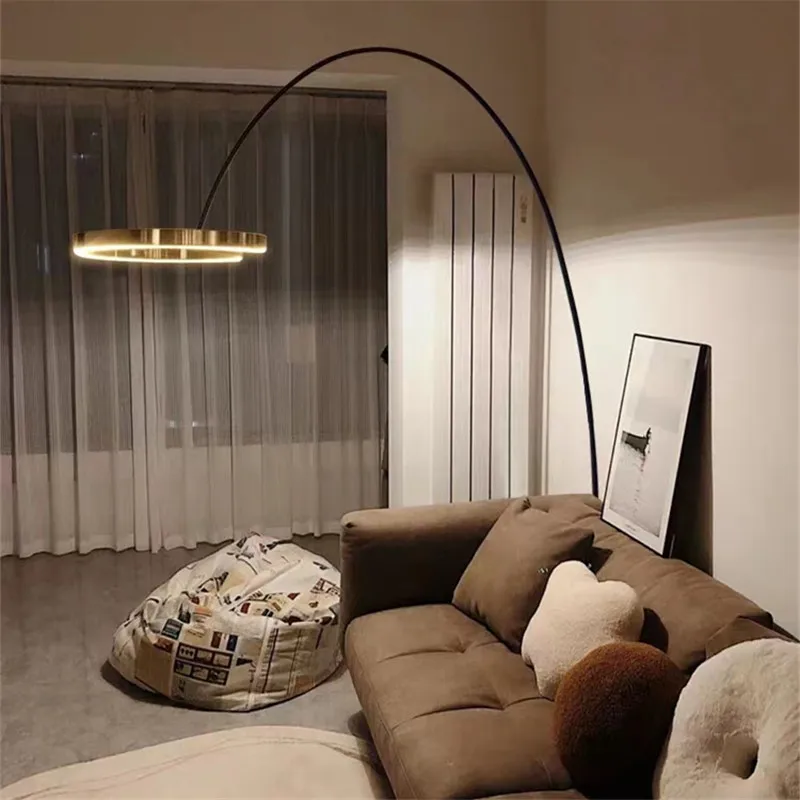
Matte Black and Bronze: Shadow and Definition
Dark finishes like matte black and deep bronze represent the opposite end of the reflectivity spectrum, absorbing light rather than reflecting it. This distinctive property creates striking visual effects that can dramatically shape how we perceive both the fixture and the light it produces.
Unlike reflective metals that call attention to themselves, dark finishes:
– Absorb most light that strikes the surface
– Create strong silhouettes and defined shadows
– Direct attention to the light source rather than the fixture itself
– Provide striking contrast against lighter walls and surroundings
This light-absorbing quality makes dark-finished fixtures particularly effective when you want the illumination itself—rather than the fixture—to be the star. The fixture recedes visually while the light it produces takes center stage. This effect works beautifully in:
– Contemporary minimalist designs where clean lines are valued
– Industrial spaces where subtle contrast adds character
– Settings where you want to minimize visual distraction
– Areas where directing attention to architectural features is desired
Matte black finishes, in particular, offer a timeless quality that works across design styles from ultra-modern to rustic farmhouse. The non-reflective surface creates a sophisticated presence that complements rather than competes with other elements in your space.
Black arc floor lamps demonstrate how these dark finishes can create dramatic lighting effects while maintaining a sleek, unobtrusive profile in your overall design scheme.
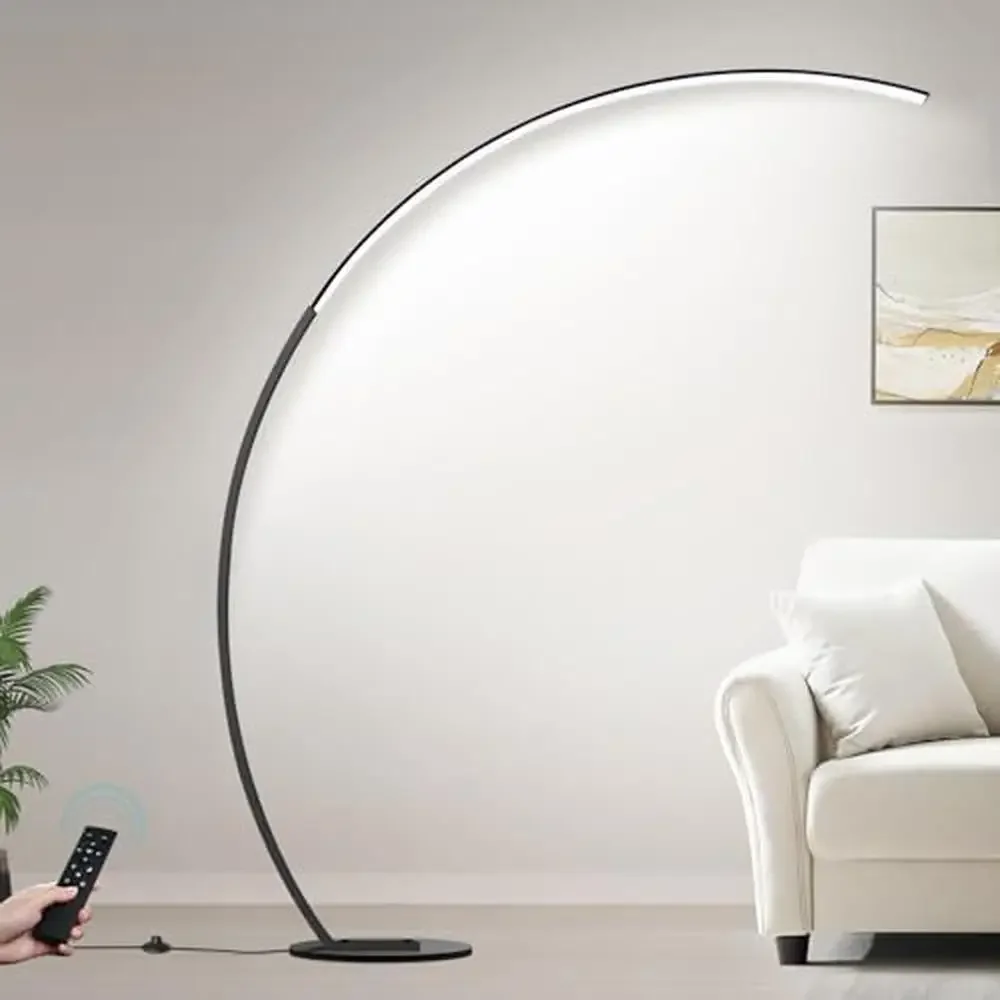
Copper and Bronze: Evolving Patina Effects
Copper and bronze finishes offer something truly unique in the world of lighting design—a living quality that evolves over time. These materials don’t just interact with light; they change how they reflect and absorb illumination as they age, creating lighting effects that transform gradually with use.
When new, polished copper and bronze surfaces provide warm, rich reflections with distinctive reddish-brown or golden-brown undertones. These finishes:
– Create a warm glow that enhances skin tones and interior colors
– Add depth and character to reflected light
– Complement natural materials like wood and stone
– Bridge traditional and contemporary design sensibilities
What sets these materials apart is their patination process. Over time, exposure to air, moisture, and handling causes chemical changes in the metal surface, developing what designers call a “living finish.” This natural aging:
– Gradually deepens the color, often creating blue-green accents on copper
– Reduces reflectivity in some areas while enhancing it in others
– Creates unique patterns that make each fixture one-of-a-kind
– Adds visual interest through subtle variation in tone and texture
This evolving nature makes copper and bronze finishes particularly appealing in spaces where a sense of timelessness and authenticity is desired. Rather than trying to maintain a pristine appearance, many designers and homeowners embrace the changing character these finishes develop.
Bronze arc floor lamps showcase how these materials can add warmth and character to your space while creating lighting effects that become more unique and personalized over time.
Perceived Color Temperature and Material Interaction
One of the most fascinating aspects of metal finishes in lighting design is how they can alter the perceived color temperature of light—sometimes dramatically. This interaction between light source and material creates effects that go beyond the technical specifications of the bulb itself.
Warm-toned metals like brass and copper act as natural warming filters. Even when paired with cool LED light sources (4000K or above), these finishes impart a golden hue to the reflected light, making spaces feel cozier and more inviting. This warming effect happens because the metal absorbs some blue wavelengths while reflecting more of the yellow, orange, and red spectrum.
Conversely, cool-toned metals like chrome and polished nickel maintain or even enhance the crispness of cool light sources. These finishes reflect light with minimal color shifting, preserving the clean, bright quality that many people prefer for task-oriented spaces.
This material interaction creates what lighting designers call “mixed light”—a combination of direct illumination from the bulb and reflected light that carries the tonal qualities of the fixture’s finish. The balance between these two light sources shapes the overall feeling of illumination in a space.
Understanding this relationship helps explain why the same light bulb can create noticeably different ambient effects depending on the fixture it’s housed in. For spaces where you want to create specific moods, considering these modern LED arc lighting ideas alongside finish selection allows for precise control over the perceived warmth or coolness of your lighting.
Strategic Finish Selection for Interior Styles
Choosing the right metal finish for your lighting fixtures plays a crucial role in reinforcing your overall interior design style. Each design aesthetic has finishes that naturally complement its key characteristics.
Modern/Contemporary
- Chrome and polished nickel for their clean, reflective qualities
- Matte black for dramatic contrast and minimalist appeal
- Brushed stainless steel for subtle texture without traditional associations
- Look for: Sharp lines, minimal ornamentation, high contrast
Traditional/Classic
- Polished brass for warmth and timeless elegance
- Oil-rubbed bronze for depth and traditional character
- Antiqued gold for formal spaces with historical references
- Look for: Detailed craftsmanship, warm tones, timeless appeal
Industrial/Urban
- Raw or blackened steel for authentic workshop character
- Matte black for contemporary edge with industrial roots
- Weathered copper or zinc for textural interest and age
- Look for: Utilitarian forms, visible mechanics, unrefined textures
Transitional
- Brushed nickel bridges traditional and contemporary elements
- Mixed metal finishes used with intention
- Satin brass offers warmth without appearing overly traditional
- Look for: Clean lines with subtle detailing, balanced visual weight
Minimalist
- Matte white or black that disappears into the background
- Subtle brushed finishes that don’t call attention to themselves
- Monochromatic schemes where the fixture blends with surroundings
- Look for: Reduced visual complexity, form following function
Your lighting finish selection should feel like a natural extension of your design language rather than competing with it. The right finish reinforces your aesthetic while creating the appropriate minimalist arc lighting for living room or other spaces, helping each room achieve its intended mood and function.
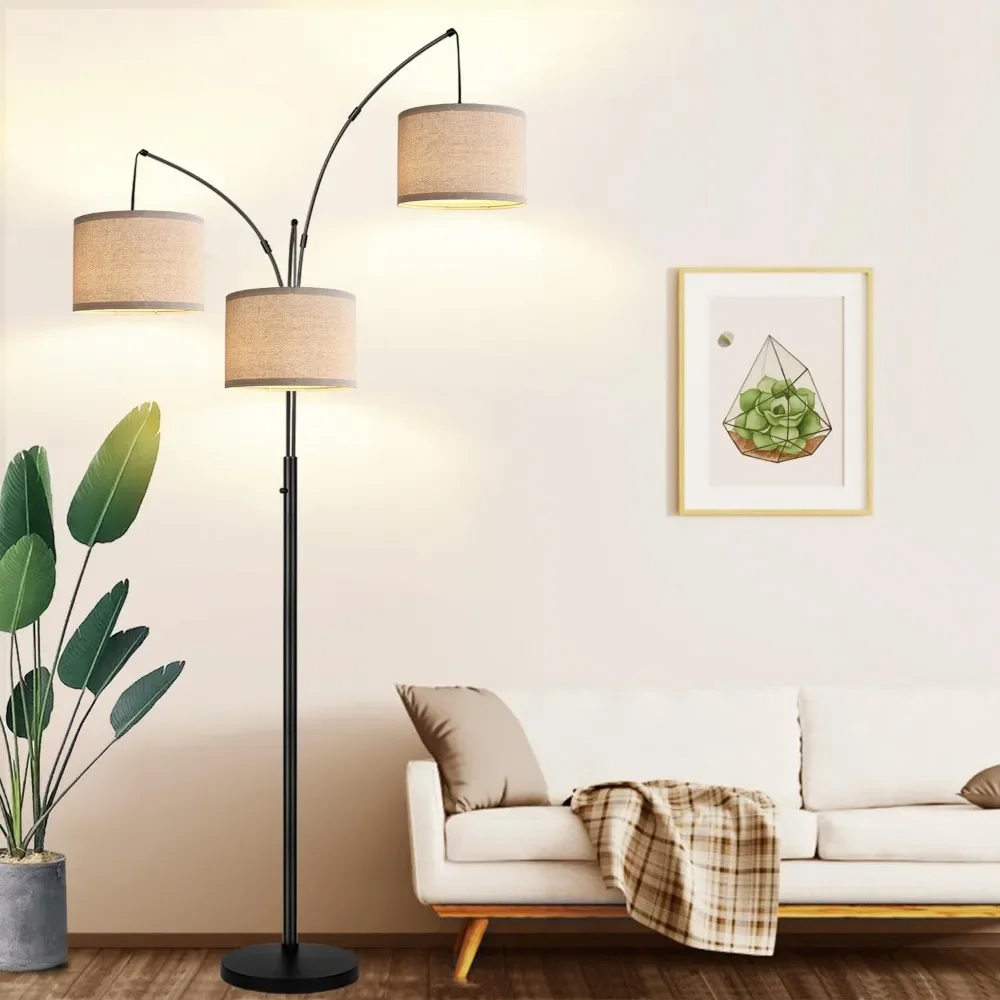
The Art of Mixing Metal Finishes
Gone are the days when all metal finishes in a space needed to match perfectly. Today’s design approach embraces thoughtful mixing of finishes for added depth and visual interest. However, successful mixing requires intention and understanding of how different metals relate to each other.
The key to effective metal mixing lies in establishing hierarchy:
– Select a dominant finish that appears on major fixtures or in larger quantities
– Choose complementary accent finishes for smaller elements or focal pieces
– Maintain some connecting element across different finishes (similar tone, style, or form)
Some combinations naturally work well together:
– Brass and black create sophisticated contrast while remaining neutral
– Chrome and nickel share cool undertones despite different reflective qualities
– Bronze and copper connect through their warm, earthy character
– Matte black works as a unifying element with almost any other finish
When mixing finishes, consider their proximity and visual relationship. Finishes don’t need to match exactly, but they should feel intentionally coordinated rather than randomly selected. This approach creates depth while maintaining design coherence.
Another consideration is how finishes relate to other elements in your space. Hardware, plumbing fixtures, and furniture with metal components all contribute to the overall metal palette. The perfect arc floor lamp guide can help you select lighting that coordinates with your existing elements while adding the right amount of contrast.
Finish Selection for Specific Lighting Functions
Different lighting roles demand different finish considerations. The function of a light fixture should influence your metal finish selection to enhance both performance and appearance.
Task Lighting
For focused activities like reading, cooking, or detailed work:
– Brushed or satin finishes minimize glare while maintaining good reflectivity
– Matte finishes reduce eye strain during extended periods of use
– Consider directional reflectors in polished finishes to concentrate light where needed
– Avoid highly polished finishes in direct line of sight
Ambient Lighting
For general room illumination that sets the overall mood:
– Warm-toned finishes like brass or copper create cozy, inviting atmospheres
– Textured finishes help diffuse light more evenly throughout a space
– Consider how the finish complements the room’s color scheme and materials
– Larger fixtures benefit from finishes that support the fixture’s visual weight
Accent Lighting
For highlighting architectural features or art:
– Dark finishes help the fixture recede, putting focus on what’s being illuminated
– Consider whether the fixture itself should be a visual feature
– Reflective finishes can create interesting secondary light patterns
– Patinated finishes add character when the fixture is visible but not the focus
Decorative Lighting
For fixtures that serve as design elements themselves:
– Choose finishes that enhance the fixture’s form and details
– Consider finishes that create interesting shadow patterns
– Polished finishes draw attention to statement pieces
– Textured or antiqued finishes add depth to ornate designs
Brass arc floor lamps demonstrate how finish selection supports function, with options ranging from statement-making polished brass to subtle brushed finishes for more functional applications.
Adjustable Arc Floor Lamp, Bronze Arc Floor Lamp
Price range: $440.95 through $558.52 Select options This product has multiple variants. The options may be chosen on the product pageBrass Arc Floor Lamp, Contemporary Arc Floor Lamp, LED Arc Floor Lamp
Price range: $490.72 through $522.04 Select options This product has multiple variants. The options may be chosen on the product pageChrome Arc Floor Lamp, LED Arc Floor Lamp
Price range: $304.95 through $1,210.40 Select options This product has multiple variants. The options may be chosen on the product pageContemporary Arc Floor Lamp, Silver Arc Floor Lamp
$459.99 Select options This product has multiple variants. The options may be chosen on the product pageContemporary Arc Floor Lamp, Gold Arc Floor Lamp
$196.24 Select options This product has multiple variants. The options may be chosen on the product pageBlack Arc Floor Lamp, Contemporary Arc Floor Lamp
Price range: $277.34 through $458.46 Select options This product has multiple variants. The options may be chosen on the product page
Practical Considerations: Durability and Maintenance
Beyond aesthetics and light performance, practical factors should influence your metal finish selection. Different finishes vary significantly in their durability and maintenance requirements, affecting long-term satisfaction with your lighting choices.
Humidity resistance becomes especially important in bathrooms and kitchens. Chrome and stainless steel typically perform best in humid environments, while uncoated brass or copper may require more maintenance to prevent tarnishing.
Fingerprint visibility differs dramatically between finishes:
– Polished surfaces show fingerprints and smudges readily
– Brushed finishes conceal minor marks much better
– Matte black can show oils but is generally forgiving
– Textured finishes naturally disguise handling marks
Cleaning requirements also vary by finish:
– Chrome cleans easily but shows water spots
– Brushed stainless needs directional wiping along the grain
– Oil-rubbed bronze requires avoiding harsh cleaners
– Living finishes like unlacquered brass develop patina that some consider desirable
For fixtures that will be frequently adjusted, like reading lamps or articulating sconces, consider finishes that withstand handling. Silver arc floor lamps with quality finishes maintain their appearance despite regular use.
Environmental factors also affect longevity. Direct sunlight exposure can fade some finishes over time, and salty air in coastal locations may accelerate corrosion on certain metals. When investing in quality lighting, these practical considerations ensure your fixtures remain beautiful and functional for years to come.
Conclusion: Making Informed Lighting Decisions
The relationship between metal finishes and lighting design goes far beyond simple decoration. As we’ve explored, your choice of finish influences everything from light distribution and perceived color temperature to glare control and overall ambiance.
By understanding these interactions, you gain powerful tools for shaping how light behaves in your space. Remember that finish selection should balance aesthetic preferences with functional needs—the most beautiful fixture fails if it creates uncomfortable glare or doesn’t provide the right quality of light for your activities.
When selecting lighting, consider how the finish works with both your light source and your interior design. Metal finishes are the mediators between raw illumination and your lived experience, transforming simple light into atmosphere and mood. This awareness allows you to make more coordinated furniture and lighting choices that enhance your entire space.
With the knowledge from this guide, you can approach lighting selection with confidence, understanding not just what looks good, but why it works in your specific context. The perfect lighting isn’t just about the fixture—it’s about the beautiful relationship between form, finish, and illumination.

